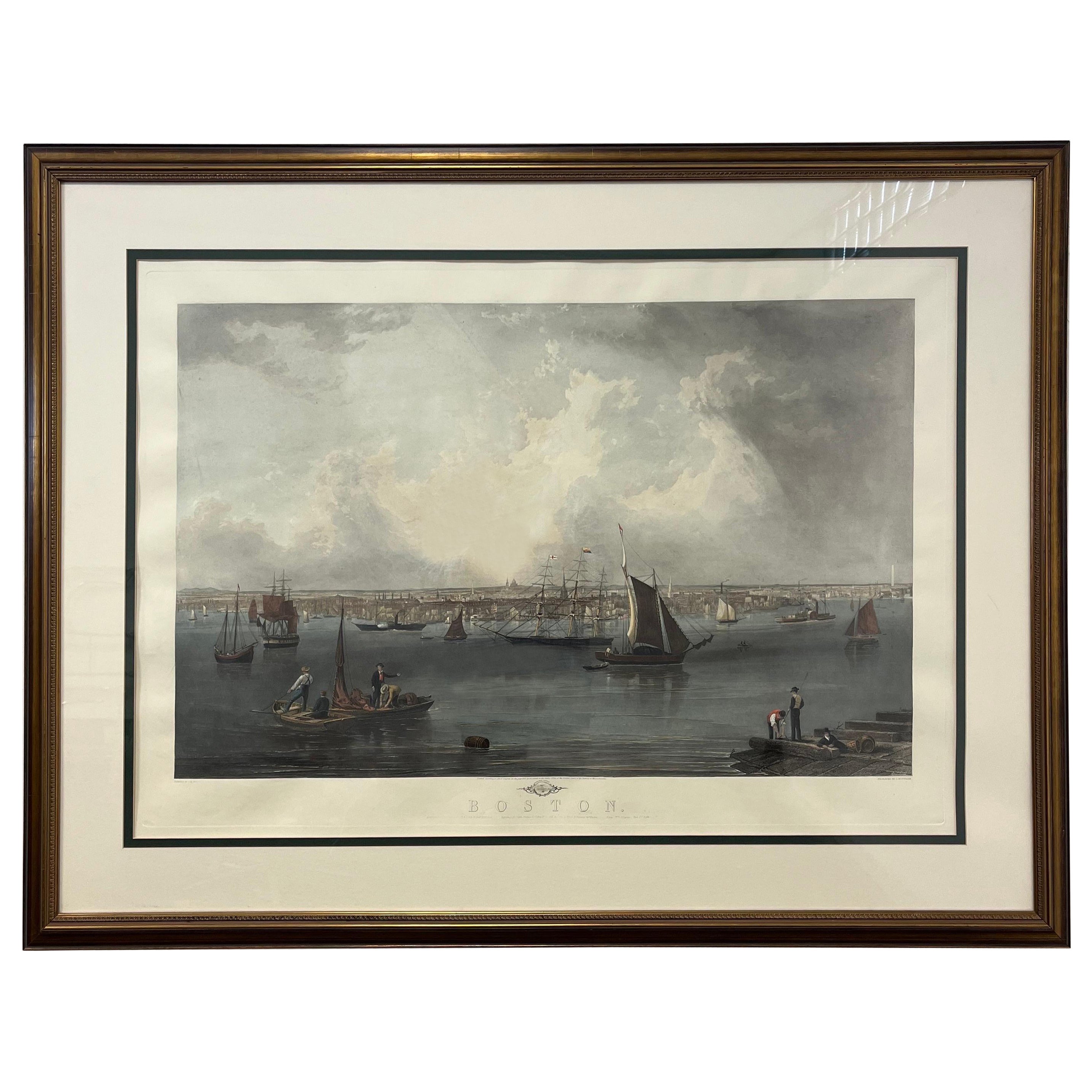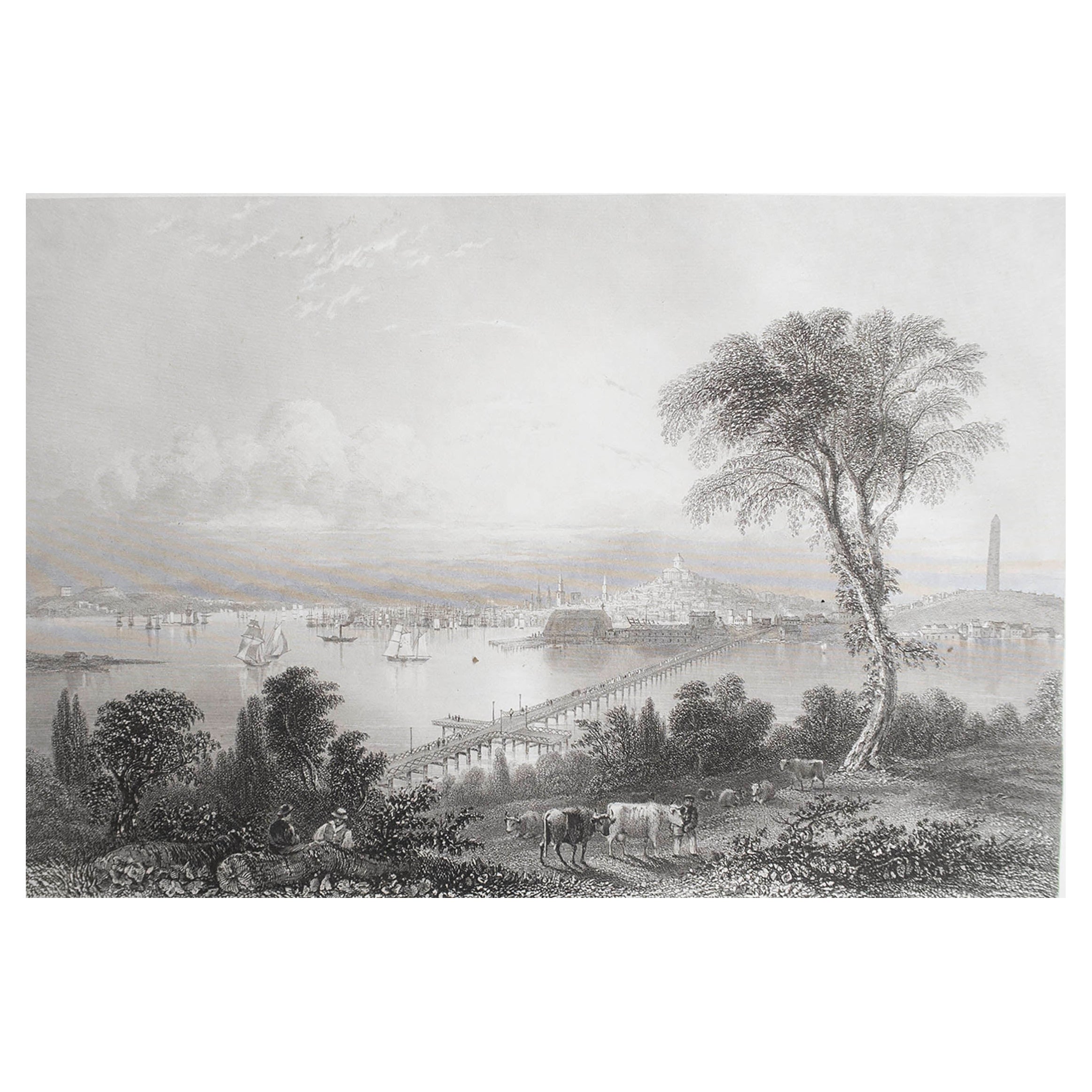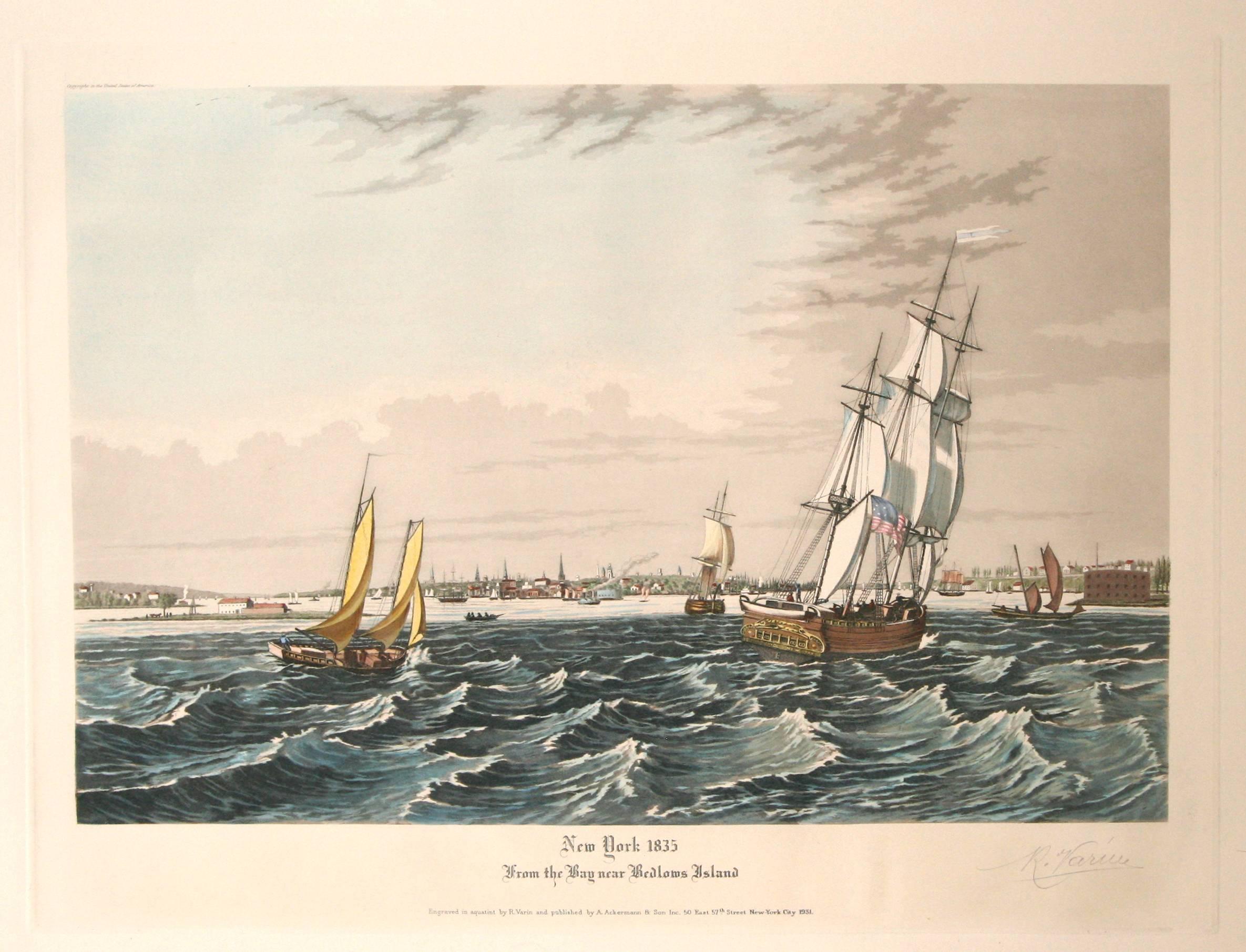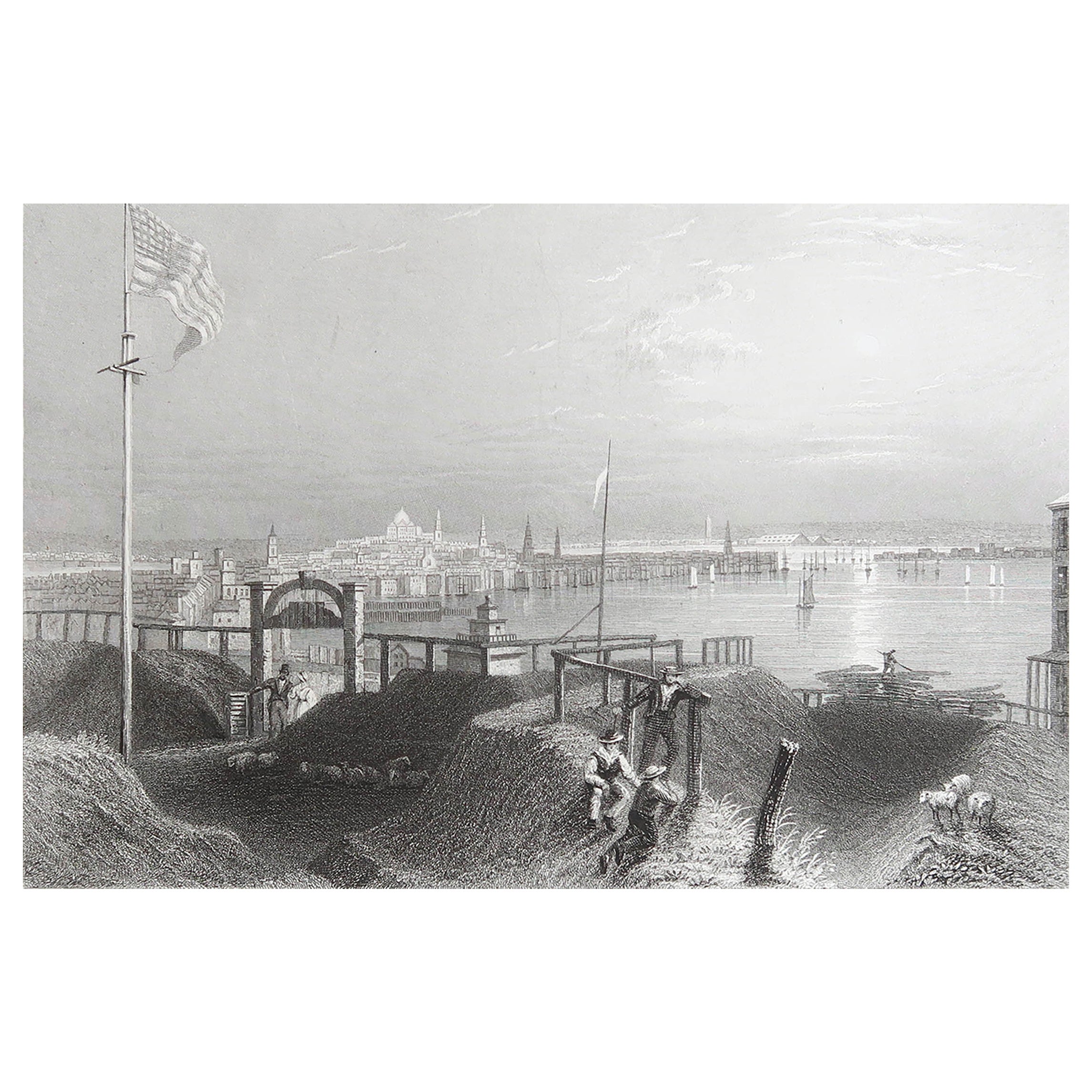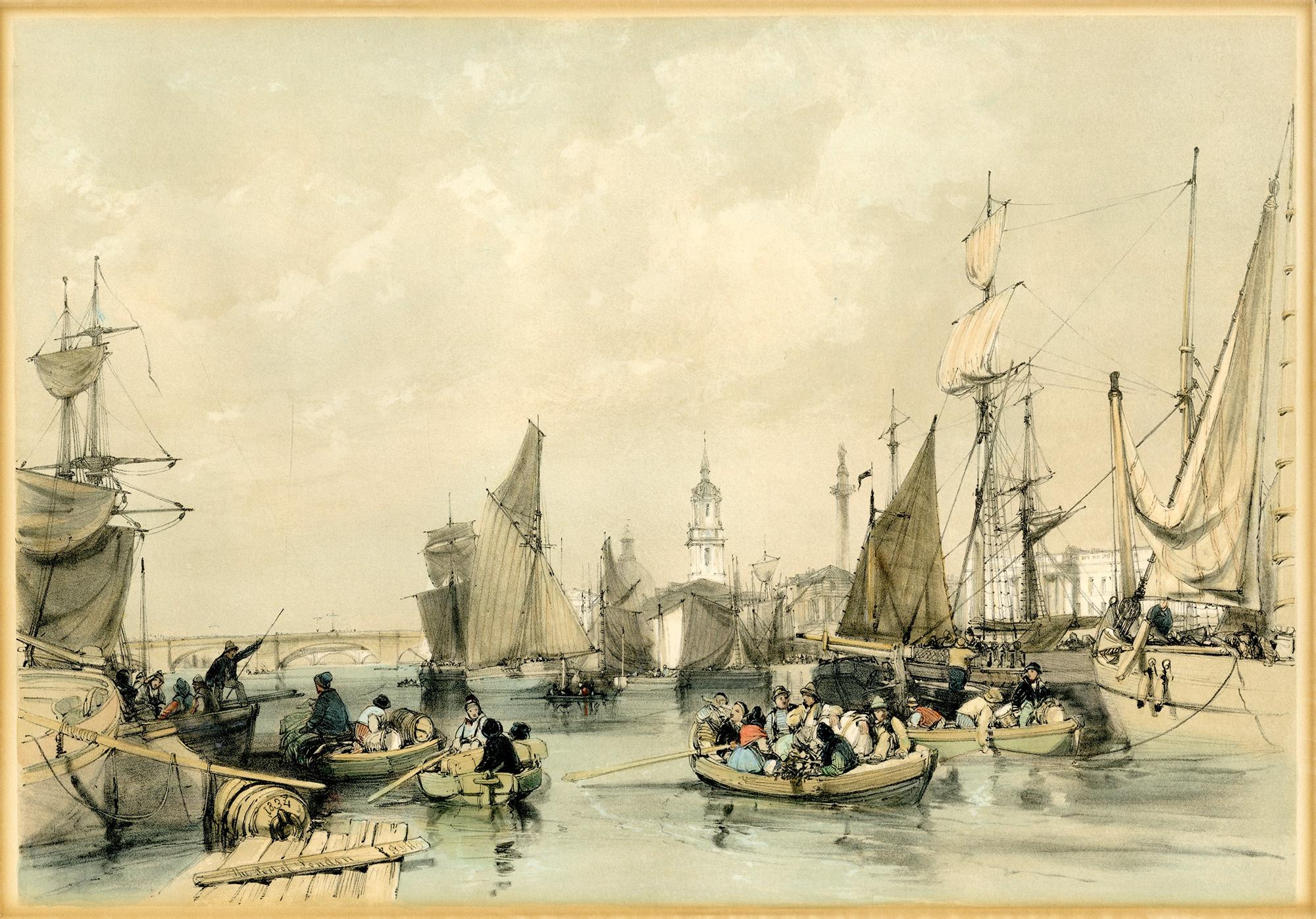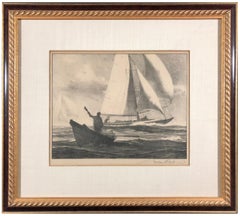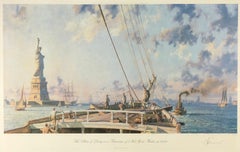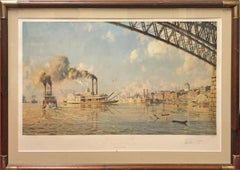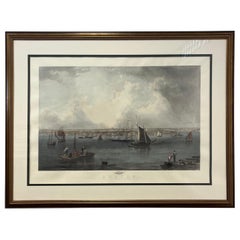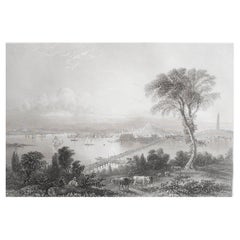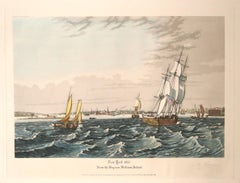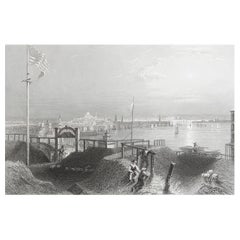Items Similar to Boston
Want more images or videos?
Request additional images or videos from the seller
1 of 8
John William HillBoston1857
1857
Price Upon Request
Price Upon Request
Price Upon Request
Price Upon Request
Price Upon Request
Price Upon Request
Price Upon Request
Price Upon Request
Price Upon Request
Price Upon Request
About the Item
John William Hill (1812-1879)
"Boston" 1857
Hand-Colored Engraving
Site Size: 29 x 41 inches
Framed Size: 39 x 52 inches
Born in London, England, John William Hill came to America with his family at age 7. His father, John Hill, was a well-known landscape painter, engraver, and aquatintist. John William had a career of two phases, a city topographer-engraver and then, the leading pre-Rafaelite school painter in this country. Employed by the New York Geological Survey and then by Smith Brothers in New York City, he did lithographs of cities, private residences and public buildings.
In 1855 at age 43, he became involved with the Pre-Rafaelite movement led by Englishman, John Ruskin. This aesthetic philosophy was a turning away from academic strictures to the purity of art before Rafael--focus on the uplifting qualities of art through natural setting landscapes, meticulous observation of nature, and bright colors on a wet ground. The bright, luminous qualities with detailed form contrasted with the sombre prevailing works of the time.
Hill worked mainly in New Jersey and along the Hudson River Valley but also was in the White Mountains of New Hampshire in 1852 and 1857 and in 1852 did a view of Richmond, Virginia that was published by Smith and Brothers.
Written by Lonnie Dunbier
Source:
David Michael Zellman, "300 Years of American Art"
Peter Falk, "Who Was Who in American Art"
- Creator:John William Hill (1812 - 1879, American)
- Creation Year:1857
- Dimensions:Height: 39 in (99.06 cm)Width: 52 in (132.08 cm)Depth: 1 in (2.54 cm)
- Medium:
- Movement & Style:Pre-Raphaelite
- Period:
- Condition:
- Gallery Location:Missouri, MO
- Reference Number:1stDibs: LU74735193661
About the Seller
5.0
Vetted Professional Seller
Every seller passes strict standards for authenticity and reliability
Established in 1970
1stDibs seller since 2017
155 sales on 1stDibs
Typical response time: 1 to 2 days
- ShippingRetrieving quote...Shipping from: Missouri, MO
- Return Policy
Authenticity Guarantee
In the unlikely event there’s an issue with an item’s authenticity, contact us within 1 year for a full refund. DetailsMoney-Back Guarantee
If your item is not as described, is damaged in transit, or does not arrive, contact us within 7 days for a full refund. Details24-Hour Cancellation
You have a 24-hour grace period in which to reconsider your purchase, with no questions asked.Vetted Professional Sellers
Our world-class sellers must adhere to strict standards for service and quality, maintaining the integrity of our listings.Price-Match Guarantee
If you find that a seller listed the same item for a lower price elsewhere, we’ll match it.Trusted Global Delivery
Our best-in-class carrier network provides specialized shipping options worldwide, including custom delivery.More From This Seller
View AllA View of St. Louis
By John Stobart
Located in Missouri, MO
John Stobart
"St. Louis, A View Through the Arches of the Eads Bridge" 1979
Color Lithograph
32.5 x 37.5 inches framed
Signed in Pencil and Numbered 221/75...
Category
1970s American Realist Landscape Prints
Materials
Lithograph
Work and Play
By Gordon Grant
Located in Missouri, MO
Gordan Hope Grant (1875-1962)
"Work and Play"
Lithograph
Signed in Pencil Lower Right
Image Size: 9 x 11.5 inches
Framed Size: approx 18 x 20.5 inches
Born in San Francisco, Gordon Grant is known for his etchings and paintings of marine subjects. He also painted portraits, streets, harbors, beaches and marines, and was an illustrator, whose work included pulp fiction* for Popular Detective magazine in the 1930s. Skilled with watercolor, Grant was honored many times by the American Watercolor Society*. Memberships included the Society of Illustrators*, Salmagundi Club*, Allied Artists of America*, New York Society of Painters, and American Federation of Artists*.
At age 13, he was sent to Scotland for schooling, and the four-month sail around Cape Horn remained a permanent influence on his career. He studied art in Heatherly and at the Lambeth School of Art* in London, and then in 1895, he became a staff artist for the San Francisco Examiner. The next year, he took the same type of job for the New York World and covered the Boer War for Harper's Weekly. He also worked for Puck magazine...
Category
Mid-20th Century American Realist Figurative Prints
Materials
Lithograph
Price Upon Request
The Statue of Liberty in a Panorama of New York City in 1886
By John Stobart
Located in Missouri, MO
John Stobart
"The Statue of Liberty in a Panorama of New York City in 1886"
Color Lithograph
approx 32 x 43 inches framed
Signed in Pencil and Numbered 914/950
A marine painter of ...
Category
1970s American Realist Landscape Prints
Materials
Lithograph
St. Louis, Gateway to the West
By John Stobart
Located in Missouri, MO
John Stobart
"St. Louis, Gateway to the West"
Color Lithograph
30 x 42 inches framed
Signed in Pencil and Numbered 434/750
Category
1970s American Realist Landscape Prints
Materials
Lithograph
Sunset on the Midway
By George Stanfield Walters
Located in Missouri, MO
George Stanfield Walters (1838-1924)
"Sunset on the Midway" c. 1880s
Oil on Canvas
Signed
Canvas: approx 25 x 36 inches
Framed Size: approx. 31 x 42 inches
George Walters - George Stanfield Walters was born in 1838 and died in 1924.
A marine and coastal painter. He was grandson to ship portraitist Miles Walters,
and son and pupil of Samuel Walters...
Category
Mid-19th Century Victorian Landscape Paintings
Materials
Canvas, Oil
Price Upon Request
Alongside
By Tod Lindenmuth
Located in Missouri, MO
Alongside, 1941
Tod Lindenmuth (American, 1885-1976)
Color Woodblock Print
9 x 7 inches
19.75 x 14.5 inches with frame
Signed Lower Right
Titled and Dated Lower Left
A founder of the Provincetown Art Association and one of the original Provincetown Printers, Tod Lindenmuth was a semi-abstract painter and graphic artist who did much to promote modernist styles. Although he was much influenced by Abstract Expressionism, his subject matter was realistic enough to be recognizable. He did linoleum cuts and was one of the first to work with that medium, and towards the end of his life, he experimented with collage. In the 1930s, he had commissions for the Public Works of Art Project and the Works Progress Administration.
Lindenmuth was born in Allentown, Pennsylvania. He studied with Robert Henri at the New York School of Art in Manhattan, and in Provincetown with E. Ambrose Webster and George Elmer Browne.
He first exhibited in Provincetown in 1915, and between 1917 and 1928 served on the jury for the Provincetown Art Association's 'First Modernistic Exhibition". He exhibited regularly with the Society of Independent Artists in New York.
He married artist and illustrator Elizabeth Boardman Warren...
Category
1940s American Modern Figurative Prints
Materials
Color
You May Also Like
Large Nautical Boston Engraved by C. Mottram after the watercolor by J.W. Hill
By John William Hill
Located in W Allenhurst, NJ
MONUMENTAL HANDCOLORED ENGRAVING - 'Boston' painted by John William Hill (NJ/CA, 1812-1879), engraved by Charles Mottram (British, 1807-1876), printed ...
Category
Antique 19th Century American American Classical Prints
Materials
Paper
Original Antique Print of Boston, Massachusetts, circa 1850
Located in St Annes, Lancashire
Great print of Boston
Steel engraving after the original drawing by W.H Bartlett
Published circa 1850
Unframed.
Category
Antique 1850s English Other Prints
Materials
Paper
New York in 1835 from the Bay near Bellows Island
By Raoul Varin
Located in Paonia, CO
New York in 1835 from the bay near Bellows Island
Raoul Varin ( 1856 - 1943 )
Hand-colored aquatint 1931
paper size 24.50 x 35
image size 17 x 22.75
cond...
Category
Early 20th Century Landscape Prints
Materials
Aquatint
$720 Sale Price
20% Off
Original Antique Print of Boston, Massachusetts. Dated 1838
Located in St Annes, Lancashire
Great print of Boston
Steel engraving after W.H Bartlett
Published by Virtue 1838
Unframed.
The measurement is the paper size.
Free shipping
Category
Antique 1830s English Other Prints
Materials
Paper
Port of London
By James Duffield Harding
Located in Middletown, NY
A scarce impression of cartographer James Duffield Harding's view of the Port of London as it was in 1834.
London: 1834.
Lithograph with hand coloring in watercolor on heavy wove p...
Category
Early 19th Century English School Landscape Prints
Materials
Lithograph, Watercolor
Ancient View of Dublin - Original Lithograph - Mid-19th Century
Located in Roma, IT
Ancient View of Dublin is an original modern artwork realized in Germany in the Mid-19th Century.
Original B/W Lithograph on Ivory Paper.
Inscripted on the lower central margin in...
Category
Mid-19th Century Modern Figurative Prints
Materials
Lithograph
More Ways To Browse
Antique Boston
Hudson Valley Antique
Smith Brothers
Original Classical Art
Pebble Beach Golf
Small Sculpture Clay
Snowy Owl
Swim Nude
Used Watch Lot
Van Gogh Signed
Vanderbilt Collection
Victorian Birds Painting
Vintage Hillman
Vintage Pool Signs
Virgin And Child Painting
Wayang Golek
19th Century Chinese School
Altarpiece Painting
